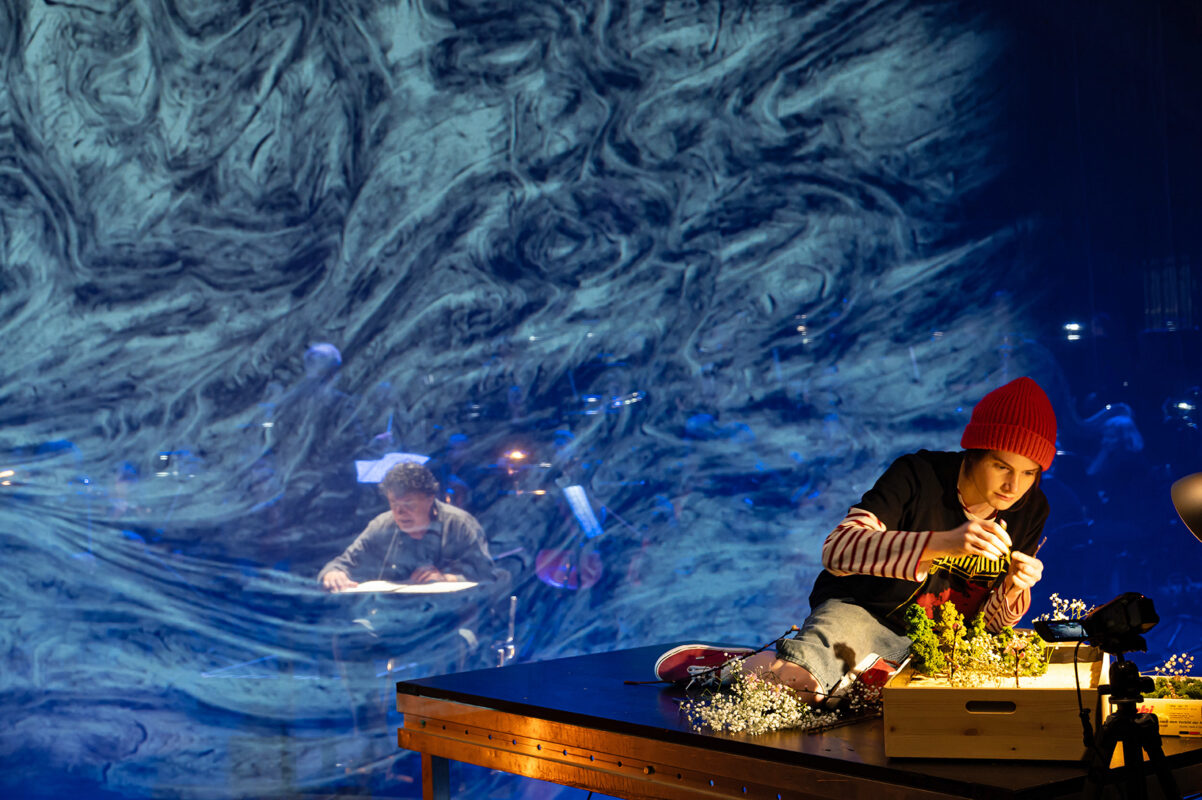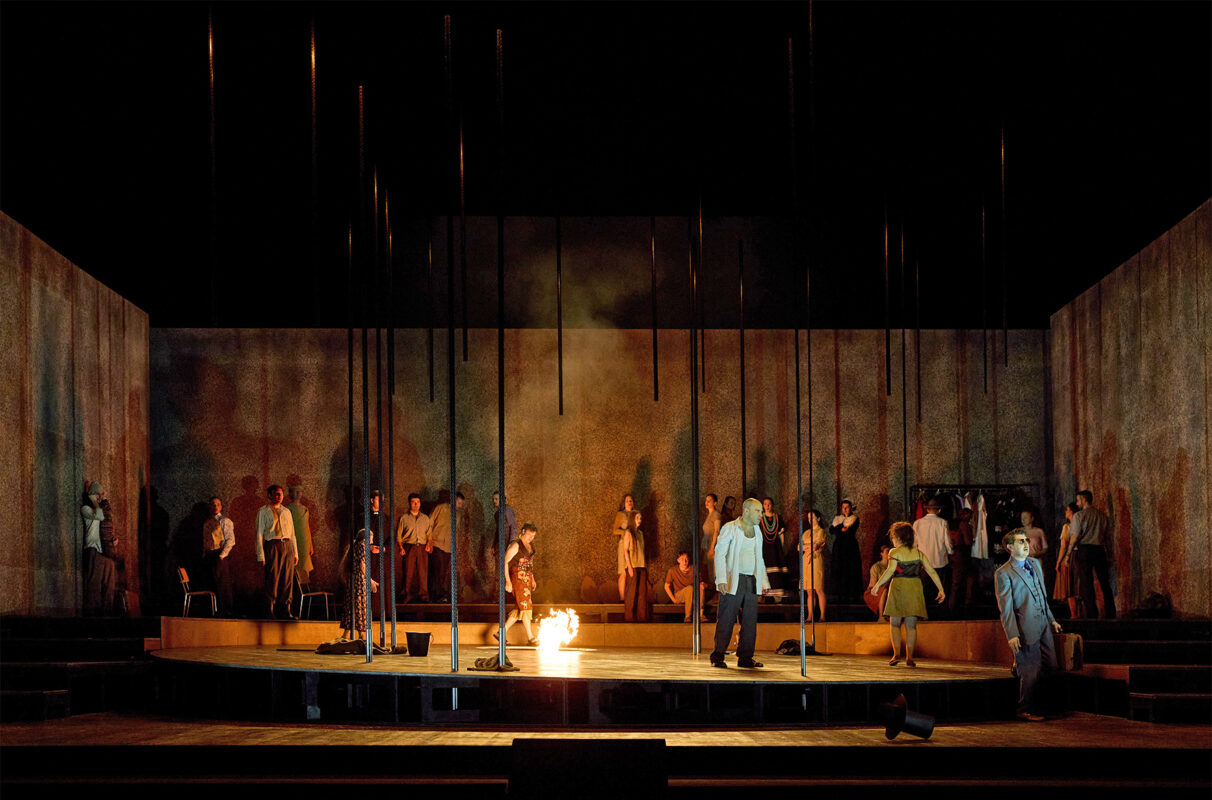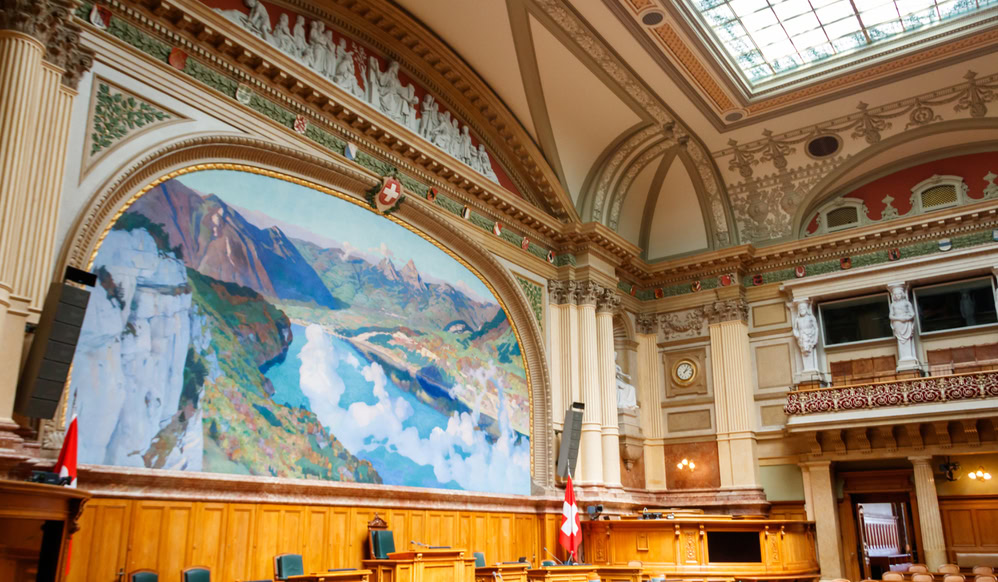No turning back for Orfeo and Malaspina
"Lamento", musical theater based on Claudio Monteverdi's "Orfeo" and Salvatore Sciarrino's "Luci mie traditrici", enjoyed five sold-out performances at Basel's Gare du Nord. Directed and conceived by Désirée Meiser, with musical direction by Giorgio Paronuzzi and Jürg Henneberger.

The project Lament is part of the events celebrating the 150th anniversary of the Basel Music Academywhich was thus able to showcase the diversity of its training program with singers and two large ensembles from the University of Music and the Schola Cantorum Basiliensis. On the other hand, it fits into the concept of Basel Gare du Nordbecause in several of its multifaceted series of events, references between times, voices and music theater are explored. Lament was created as a co-production between the two institutions. To Salvatore Sciarrino was commissioned to write an epilogue for the performances: Distendi la frontewhich was performed for the first time.
Roles or people?
Lament. "Heroes become perpetrators", writes the performance brochure. "Overwhelmed by their self-chosen project, they exceed their personal Point of no return" and end in pain over the loss. The evening tells of this spiral of action. It depicts disastrous human behavior through scenes from Monteverdi's Orfeo and from Salvatore Sciarrino's Luci mie traditrici (My treacherous eyes).
The story begins with singers gathering for a singing seminar. To the sound of the ensembles ad astra (Schola Cantorum Basiliensis) and Diagonal (Basel University of Music), they greet each other and get to know each other. Musica (Monteverdi) then begins to distribute the roles. Just roles? Or more? A good two hours later, the characters walk off to the sounds of Monteverdi's Lament They are now drawn apart again by the terrible events that have come to fruition and taken them beyond the fulfillment of their roles into an existential dimension. "They experience the seminar as something between life and death, which they cannot emotionally escape ..." (program booklet). Sciarrino's newly composed epilogue Distendi la fronte (Relaxing the forehead) smoothes the waves, gently and wisely: "We have entered the zone where ... reason and madness mingle ... We cannot return home covered in blood ..." (Sciarrino).
Paths of life and suffering
Six stations exemplify the tragedy of the man who has been forced to his personal Point of no return arrives. Orfeo, on his way to bring his Eurydice back from the underworld, cannot fulfill the condition of not looking back. He turns his back on her and loses her for all time. The means of representation, blind man's spectacles and blind man's stick, given to the singer by one of the "coaches" of the singing seminar, beautifully fulfill the function of making the difficult to imagine vivid. The story of Count Malaspina, who runs astray when he sees no other way out than to kill his wife for her infidelity, is told parallel to Orfeo's story. Both "heroes", Orfeo and Malaspina, experience the consequences of their actions as a punishment to which they are now exposed for life. "Bathe me in blood. Farewell, farewell, I will live in torment forever." (Malaspina)
The stages of the two lives and ordeals are dramaturgically well chosen. Even if it may not be possible to decipher all the images immediately, the direction is convincing and impressively geared towards a contemporary theatrical language. The singers perform their parts with mastery and confidence, with expressive voices without exception. The emotion of the role and their own feelings are equally part of their performance. The ensembles are positioned to the side of the stage, symmetrically arranged and almost equally strong: ad astra with a lush continuo group for Monteverdi, Diagonal with colorful instruments for Sciarrino. Both achieve a precise and colorful performance.
Bold and successful mix of styles
The texts in the program booklet are a good introduction to the subject matter. However, it is difficult to say whether and to what extent the average listener will find parallels and similarities of an aesthetic nature between such different musical styles. In any case, the realization is fascinating. It begins with a balanced juxtaposition of the works in order to increasingly and convincingly create mixtures, for example when both ensembles sing along with a Monteverdi choir (a beautiful scenic idea!) or when violins from the Schola ensemble support the playing of the Sciarrino ensemble. Even superimpositions of the two musics are realized. It is impressive to experience (and this fully confirms the conceptual idea) how both composers use singing as a "manner" over a period of 400 years. The effect of Monteverdi's singing (ornamentation, affect), which is still immediately appealing today, but nevertheless artificial, finds a parallel in Sciarrino's way of using the voice, sometimes cantabile, sometimes halting, as a conscious expression of "voice" more than of "pure" music. Lyrically, too, this opens the door to many parallels.
Finally, I would like to congratulate all the members of the large team. Openness, skill and aplomb characterize them all. The significant resources of the Gare du Nord and the Basel University of Music became an experience. The audience at the five sold-out performances (October 19 to 24, 2017) was thrilled.








